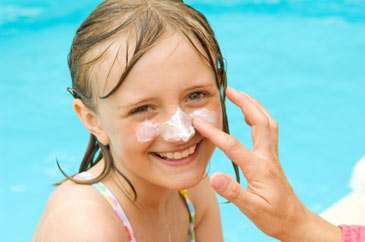Your Guide to Sunscreen for All Ages

In this article, you will find:
Guidelines by age
Children of all ages should be kept out of the sun between the hours of 10 am and 4 pm, when UVA and UVB rays are the strongest. Dress your child in long-sleeved, cotton clothing, and in a fabric with a tight weave, since these protect against the sun better than clothes with a looser weave. Clothing with an Ultraviolet Protection Factor (UPF) will provide additional protection - look for clothing with a UPF of 30 or higher.Additionally, make sure your child wears a hat, preferably a wide-brimmed bonnet or hat that covers her face, neck, and ears, and sunglasses with at least 99 percent UV protection.
When applying sunscreen, use enough to cover all exposed areas, including your child's face, nose, ears, feet, and hands and give chemical-based products at least 30 minutes to absorb into your child's skin before going in the sun. Choose a product with an SPF of 15 or higher, and reapply sunscreen every two hours, even if it's a cloudy day, and even if the product is waterproof. Your child will most likely be active when outside and sunscreen can wear off from swimming, sweating, or simply soaking into the skin.
In addition, the Skin Cancer Foundation recommends the following age-specific sun protection guidelines.
Babies
The same guidelines should be followed for babies over six months, but small amounts of sunscreen can be applied to exposed areas, such as your baby's hands. Look for a tear-free formula to avoid stinging if it gets in your baby's eyes.
Younger Children
Teens